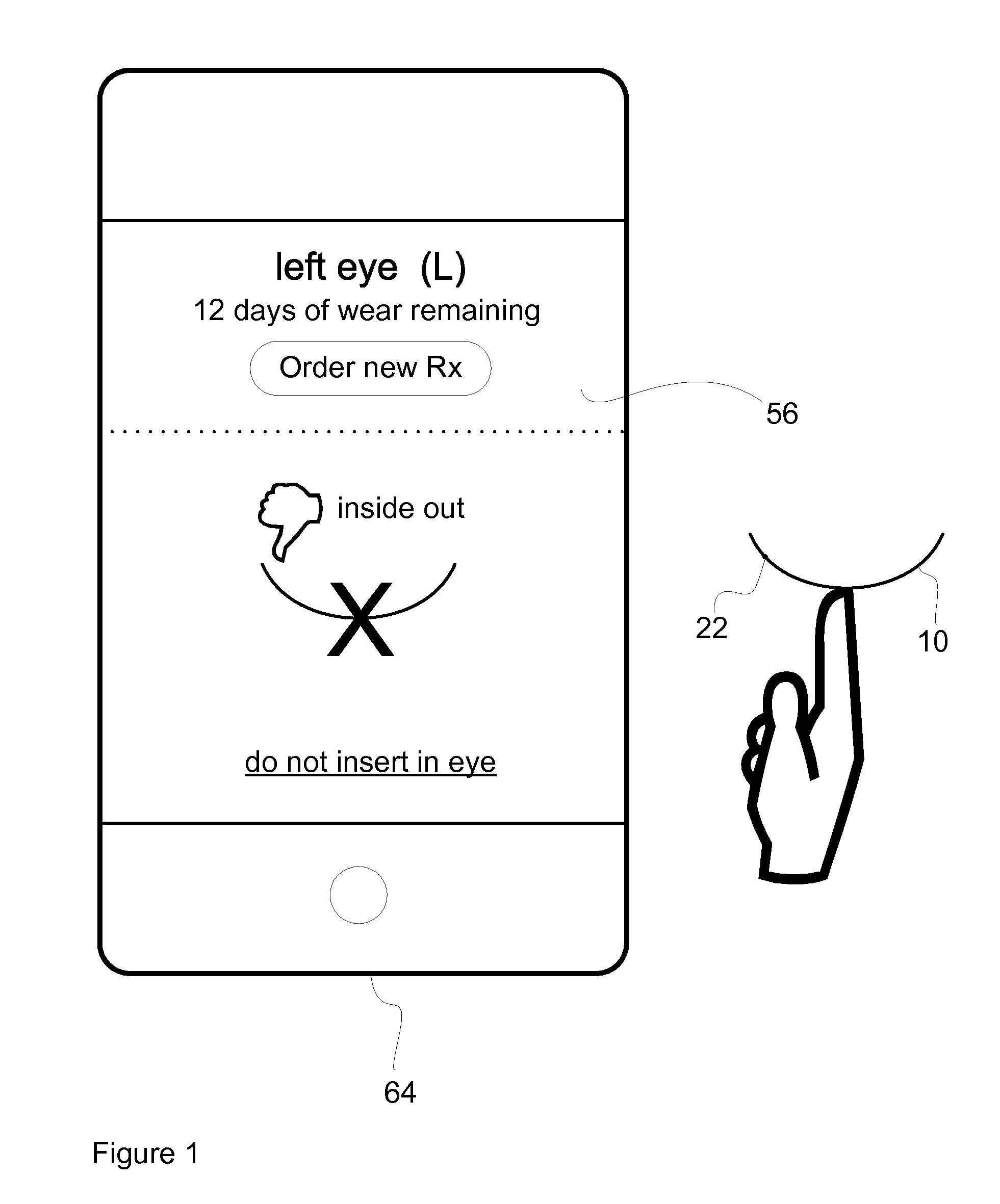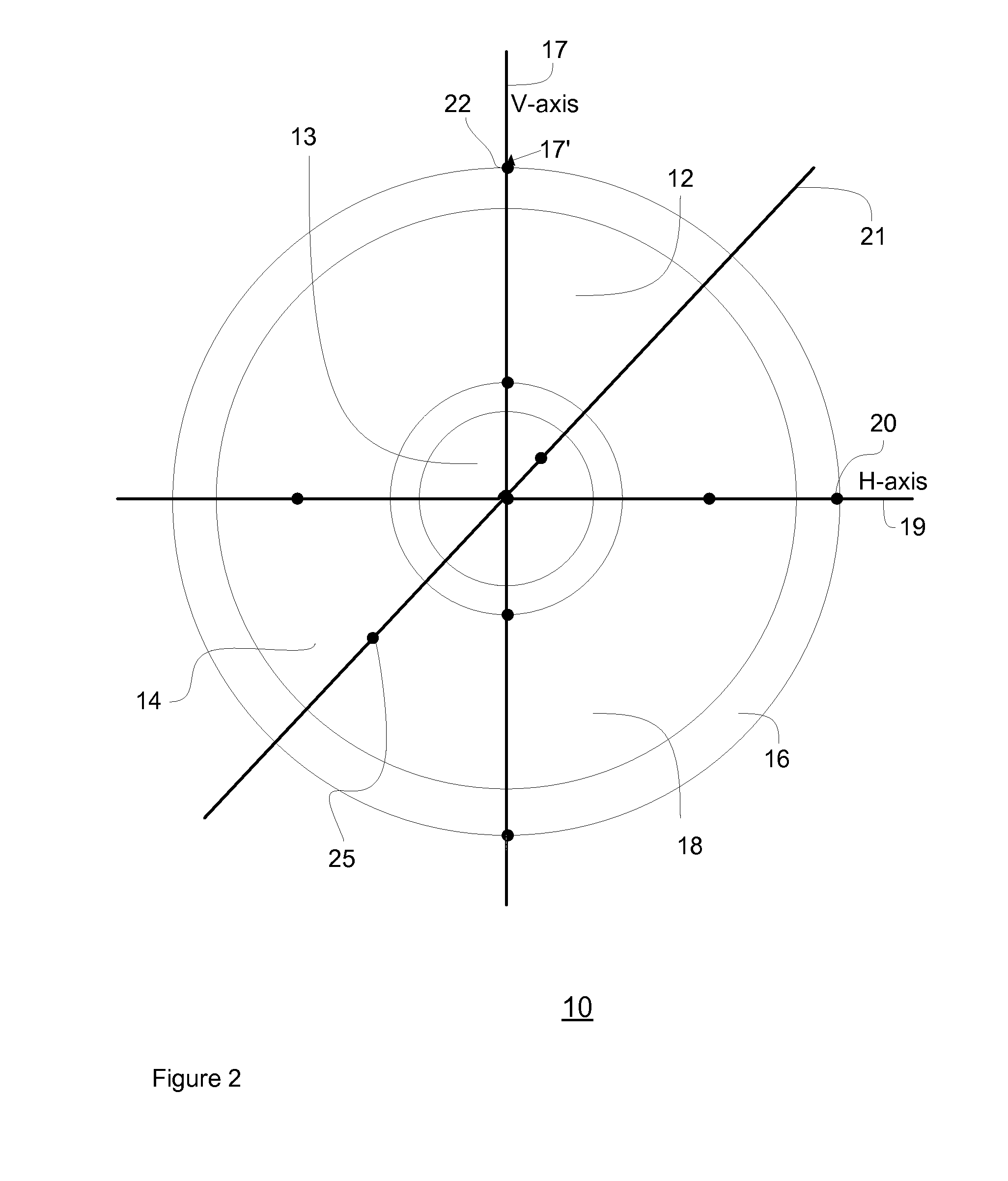Method and System for Determining the Orientation of an Ophthalmic Lens
a technology of ophthalmology and orientation, applied in the field of method and system for determining the orientation of ophthalmology, can solve the problems of not being strictly useful for users with already impaired vision, not allowing oxygen to pass through the lens to the eye, and not being able to readily distinguish between lenses intended for the left eye and/or the right eye, etc., to achieve significant reduction of eye damage, distortion of optical properties of lenses, and discomfort to the eye
- Summary
- Abstract
- Description
- Claims
- Application Information
AI Technical Summary
Benefits of technology
Problems solved by technology
Method used
Image
Examples
Embodiment Construction
[0032]The following detailed description is merely exemplary in nature and is not intended to limit the invention or the application and uses of the invention. Furthermore, there is no intention to be bound by any expressed or implied theory presented in the preceding technical field, background, brief summary or the following detailed description.
[0033]Referring to FIGS. 1 and 2, there is shown an optical device 10 having features for characterization thereof, such as an ophthalmic device, in an exemplary embodiment of the present invention. The ophthalmic device 10, as disclosed in the exemplary embodiments, includes, but is not limited to, ophthalmic lenses, soft contact lenses, hard contact lenses, bifocal contact lenses, multi-focal contact lenses, colored contact lenses, disposable contact lenses, extended wear contact lenses, gas permeable (GP) contact lenses, rigid gas permeable (RGP) contact lenses, monovision lenses, orthokeratology lenses, prosthetic contact lenses, silic...
PUM
 Login to View More
Login to View More Abstract
Description
Claims
Application Information
 Login to View More
Login to View More - R&D
- Intellectual Property
- Life Sciences
- Materials
- Tech Scout
- Unparalleled Data Quality
- Higher Quality Content
- 60% Fewer Hallucinations
Browse by: Latest US Patents, China's latest patents, Technical Efficacy Thesaurus, Application Domain, Technology Topic, Popular Technical Reports.
© 2025 PatSnap. All rights reserved.Legal|Privacy policy|Modern Slavery Act Transparency Statement|Sitemap|About US| Contact US: help@patsnap.com



